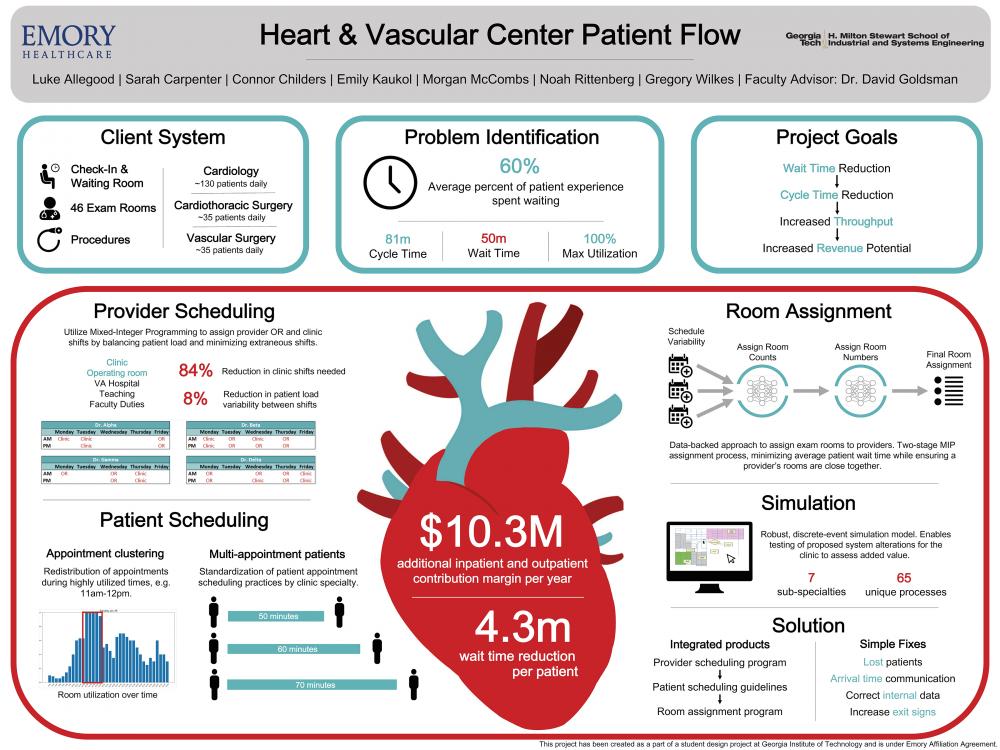Client Context
The Emory Clinic Heart and Vascular Center is a multi-specialty outpatient clinic located next to Emory University Hospital. As part of their continuous improvement efforts, clinic administrators identified patient wait time as an area for improvement.
Wait time is defined as the cumulative non-value-added time during a patient visit (clinic arrival to end of final service). Decreased patient wait time creates the potential for increased patient throughput, and thus, increased earnings from outpatient clinic visits as well as from A2 patients who undergo inpatient procedures at an Emory hospital.
Project Objective
Based on time study observations, patient cycle time in A2 averages 81 minutes, with wait time averaging 50 minutes; thus, over 60% of a patient visit is spent waiting. Key drivers of high wait time were identified as provider exam room assignment, patient appointment scheduling practices, and provider scheduling. Sub-projects and deliverables for each of these drivers were developed.
Design Strategy
The provider exam room assignment design strategy is two-fold. First, a mixed-integer program (MIP) provides a data-driven, standardized procedure for matching providers and exam rooms. Matching is based on parameters including available provider hours, number of patients, and patient type. The MIP includes a Graphical User Interface (GUI) designed for daily use on an Emory computer. Secondly, a heuristic provides an alternate method for daily room assignment. The MIP and heuristic are presented together, providing Emory with both a dynamic and simpler option.
The patient appointment scheduling consists of guidelines which consider patient type and appointment time and seek to minimize patient wait time.
The provider scheduling is a mixed-integer program and GUI, which assigns doctors to clinic and operating room (OR) shifts based on expected patient loads, specialty, and availability constraints (research, teaching obligations, etc.).
A simulation model of the clinic was developed using time study data in order to analyze current operations, test potential system changes, and determine a deliverable valuation.
Deliverables
The team delivered three integrated solutions: A provider-room assignment tool, a patient appointment scheduling guidelines, and a provider scheduling tool. The integrated deliverables produce an estimated 10% reduction in patient wait time. Through the application of Little’s Law, this wait time reduction enables Emory to take on an estimated 3,300 appointments per year, or equivalently 1,941 additional patients per year.


